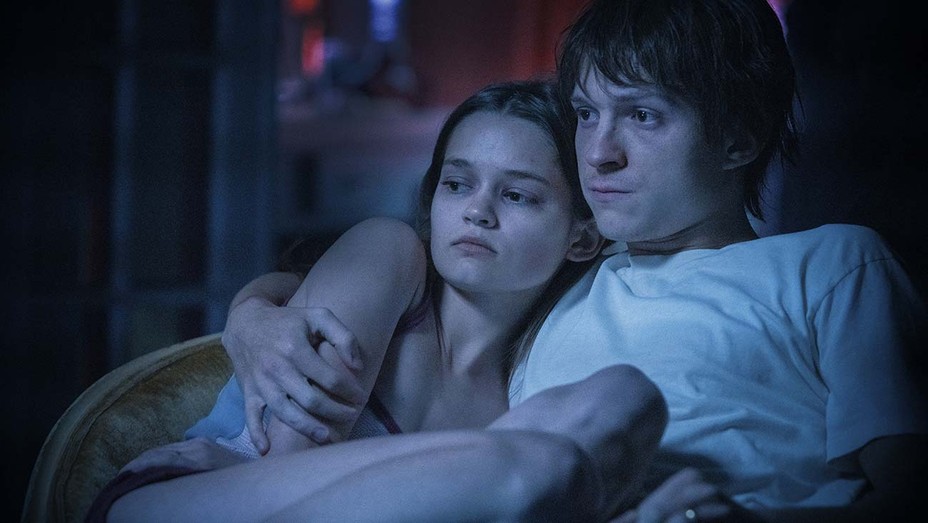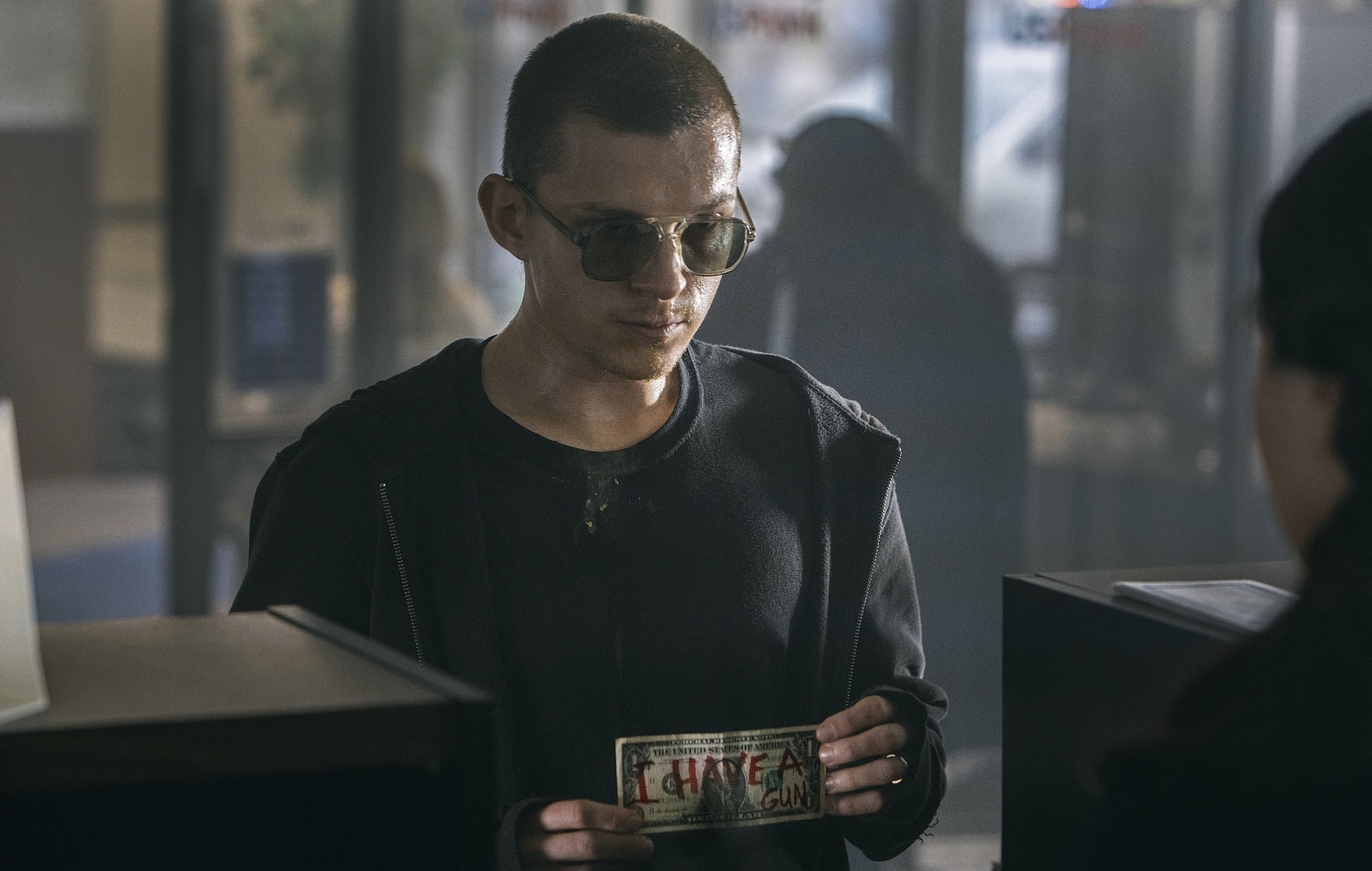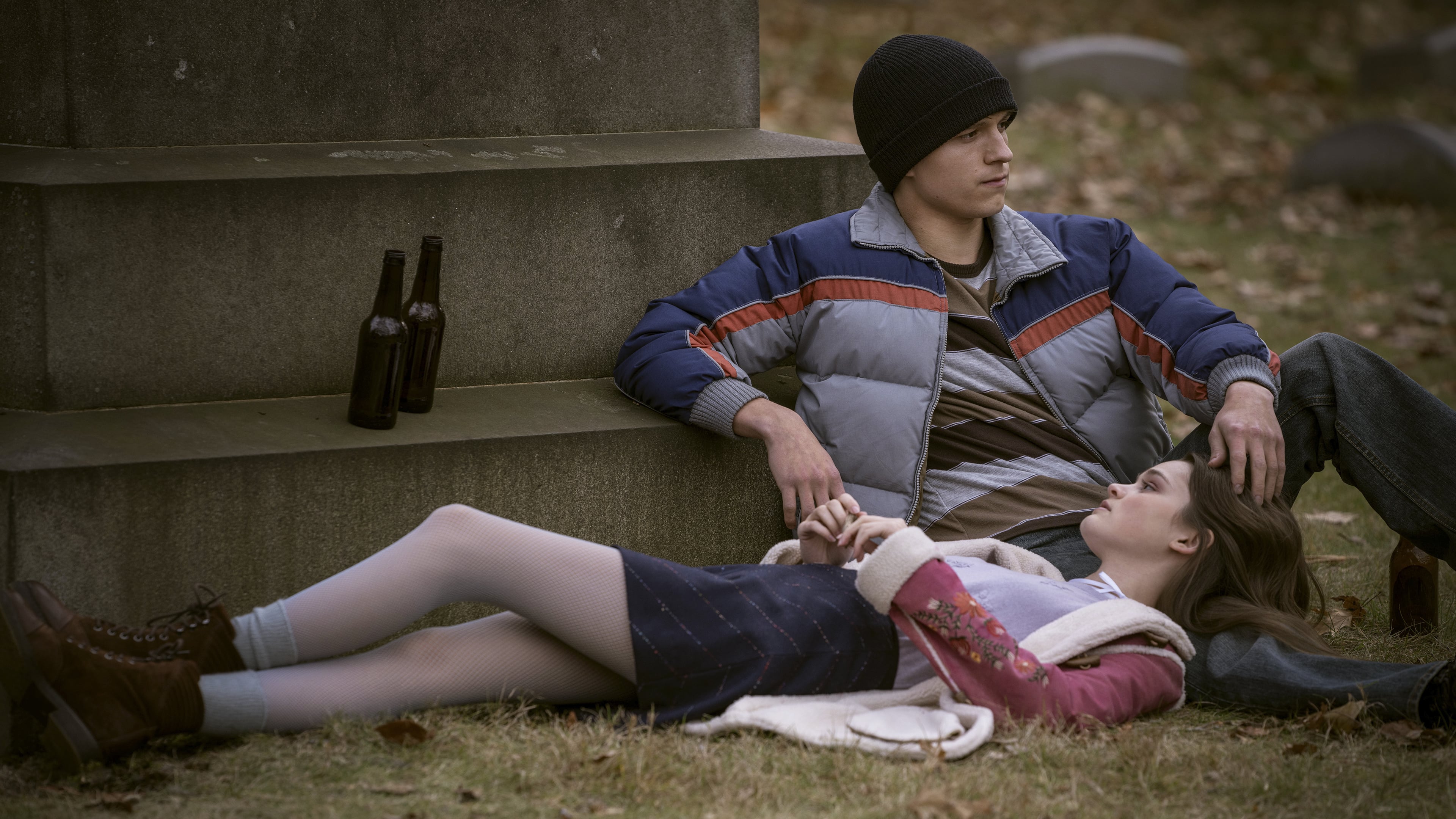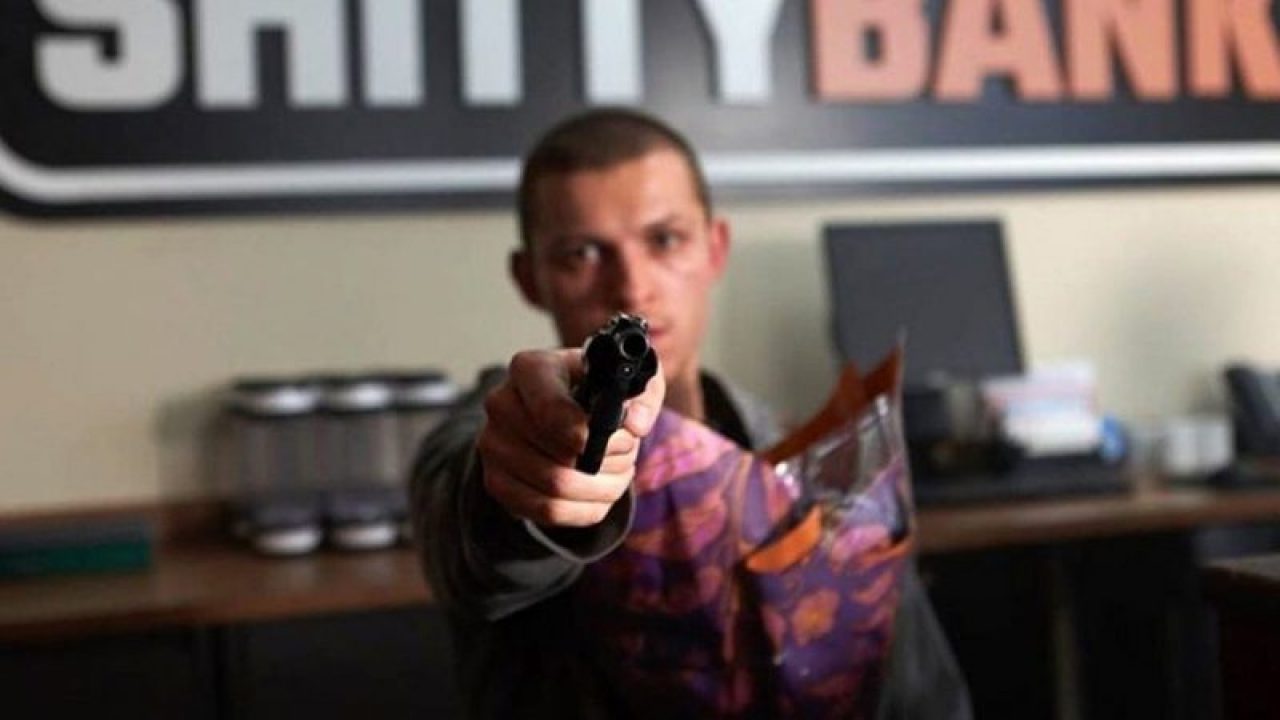Following the conclusion of their stewardship of the zillion-dollar Marvel franchise, the Russo Brothers have decided to return to their roots in Cleveland, Ohio, in ‘Cherry,’ the cinematic adaptation of the semi-autobiographical novel of the same name by American author Nico Walker. The story follows an unnamed young protagonist (Tom Holland), who drops out of college and enlists in the Army to serve as a medic in Iraq.
After returning home, he suffers from a severe case of PTSD, which also affects his wife. They both become text-book victims of the opioid crisis, and the Protagonist is forced to rob banks to sustain it. Staying true to its source material, ‘Cherry’ unfolds like a book comprised of seven chapters, including a prologue and an epilogue. Here is everything you need to know about its ending. SPOILERS AHEAD.
Cherry Plot Synopsis
The film begins in the early 2000s. The Protagonist meets Emily in the English class at their college. There is an instant connection that quickly evolves into a whirlwind romance once his horrible girlfriend is out of the picture. But Emily becomes afraid of how fast things are progressing, and despite having genuine feelings for the Protagonist, she one day declares out of the blue that she is moving to Canada to attend college. They subsequently break up, and the Protagonist, not knowing how to deal with the sudden onslaught of pain and sadness, joins the Army at the height of the Iraq War.
So, when Emily has a change of heart and returns, admitting that she loves him, it’s already too late to stop the wheels in motion. Seeking to give their relationship a sense of permanence, the young couple gets married before the Protagonist is shipped off to boot camp. Here, the film starts to shed the young-adult fluff, embracing darker themes. The light-hearted comedy of the first part is also replaced with biting satire on the entire war machinery.

When he arrives in Iraq, the Protagonist finds himself completely unprepared for the enormity of the tragedy around him. He loses most members of his unit, including his best friend and fellow medic, Jimenez (Jeff Wahlberg). The Protagonist’s return to civilian life is preceded by a military ceremony at some generic gymnasium, where he is decorated. That medal is one of the two things he leaves the Army with, the other being trauma.
The narrative undergoes thematic changes once more, as the horror of what the Protagonist has witnessed in Iraq comes back to haunt him. He tries to deal with it with Xanax before Emily forces him to seek out professional help. However, the physician/psychologist, with a plaque reading “Dr. Whomever,” suggests OxyContin, expediting the Protagonist’s descent to heroin addiction. Emily, who is equally overwhelmed by their situation, follows suit.
As their debt mounts and their parents stop giving them financial support, the Protagonist starts robbing banks to pay for their next fix. Their old friends disappear, and the new ones terrify them. After paying the money they owe to the local drug lord, the Protagonist surrenders to the police, hoping for a modicum of redemption.
Cherry Ending: What Happens to the Protagonist and Emily?
Yes, when the film ends, they both are free of their addiction. If the tremulous love story between the Protagonist and Emily serves as the beating heart of the film, the main objective of the narrative is to underscore the devastating opioid epidemic and how veterans who have PTSD are affected by it. Especially in Ohio and the surrounding region, it has become an alarming disaster.
‘Cherry’ portrays that reality in a heavily stylized manner, combining voiceover from the main character, who oftentimes speaks directly to the camera, with a plot that is self-aware to a degree. The protagonist, a victim of governmental apathy as well as a doctor thoughtlessly prescribing Oxy, represents hundreds of thousands of people in similar circumstances and serves as a medium for a sharp critique against the institutions that enable this.

Both the Protagonist and Emily become so entrenched in their addiction that it turns into an intrinsic part of their romance. The Protagonist knows that he is broken and openly acknowledges that he is the primary reason that led to Emily becoming an addict. He even tries to walk away from her after she overdoses, and her mother begs him to do so. But when Emily declares that she will get high with or without him, he realizes that despite all his good intentions, he can’t part ways from her this way. She has become as self-destructive as him; she is as big of a victim of his PTSD as he himself.
So, he takes the only path available. By surrendering to the police, he puts a physical barrier between them that neither can cross at will. As the Protagonist subsequently spends more than a decade in jail, it gives both ample time to heal. We are not shown what Emily goes through during this period. However, we are offered glimpses of what the Protagonist endures in his road to recovery, and that is enough to tell us that Emily likely encounters similar hardships.
Do the Protagonist and Emily Get Together?
Yes, when the Protagonist gets out of jail, Emily is waiting for him. Their relationship begins like a typical college romance, full of potential and youthful exuberance. It doesn’t take the Protagonist long to realize that he is hopelessly in love with Emily and speaks to her about it. Although she harbors similar feelings, Emily panics and breaks up with him, claiming that she is moving to Canada to attend college. By the time she comes to terms with her emotions and returns, he has enlisted in the Army. They get married, hoping that it will bring some stability to their relationship despite the distance.

However, their lives begin their downwards spiral the moment the Protagonist is shipped off. The absurdity of military training gets enunciated, as do the film’s profoundly anti-war themes. The Protagonist carries his harrowing experience in Iraq back to America and discovers that he can’t assimilate into a civilian society any longer. As he had quit college before enlisting, he doesn’t have a degree.
He tries to work in construction, but even that goes away when he becomes an addict. Meanwhile, the relationship between him and Emily becomes toxic, especially for the latter. Her mother recognizes this and tries to save her by convincing the Protagonist to leave. It doesn’t work because the physical distance that the Protagonist tries to put between them isn’t enough to keep her away from him.
When he surrenders himself to the police, it’s a call for help for both of them. Away from the worst versions of each other, they get the chance to seek help and recover. The Protagonist manages to leave the war trauma behind, while Emily begins thriving again, likely with her parents’ support. When they reunite, they get another opportunity to find happiness together.
What is the Significance of the Title?

According to Walker, the title is a reference to the phrase “pop the cherry.” While it is generally used in a sexual context, Walker utilized it to note the transition from the “before” to the “after” of an experience. In the film, it can apply to all major plot devices — from romance to war to addiction to crime. The Protagonist and Emily suffer disillusionment as they go through each of them, losing a part of their initial innocence but becoming worthy of the eventual redemption in the process.
Read More: Where Was Cherry Filmed?


You must be logged in to post a comment.